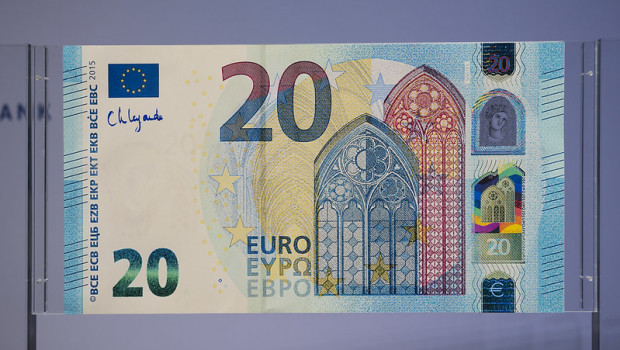Euro area current account falls into the red in September

The euro area's current account fell into the red during the month of September.
According to the European Central Bank, the single currency block recorded a current account deficit of €8bn for that month, down from €27bn during the previous month.
On a 12-month basis meanwhile, the euro area's current account increased to €50bn or 0.4% of the block's gross domestic product, versus a surplus of €336bn over the year to September 2021.
The main drag came from international trade in goods, which flipped from a surplus of €362bn to a deficit of €41bn, while the surplus on the primary income balance reduced from €65bn to €19bn.
Going the other way, the surplus in services trade widened from €75bn to €134bn and the deficit in the secondary income balance from €166bn to €162bn.
On the other side of the balance of payments, the euro area's financial account improved.
Direct investment by euro area residents in non-euro area assets jumped from €86bn to €206bn over the latest 12-month stretch.
Net disinvestment by non-residents meanwhile increased from €38bn to €60bn.
Portfolio equity investments, defined as investments worth less than 10% in a company, by euro area residents declined from €518bn to €146bn, and net sales of non-euro area debt securities reached €20bn, down from net purchases worth €475bn.
For their part, non-residents' net equity purchases fell from €511bn to €103bn and their net sales of euro area debt fell from €343bn to €124bn.
Looking at the 12-month changes in the balance of payment's components, the ECB said that euro area MFI's net external assets fell by €148bn, due to net outflows in direct investment, other investment and other flows.
The current and capital account surpluses on the other hand served as a partial offset, together with non-MFI's net inflows in portfolio equity investment and, to a lesser degree, by protfolio debt investments.
For September 2022 alone however, the Eurosystem's stock of reserve assets improved from €1,130.6bn to €1,135.8bn.
Commenting on the latest data, Melanie Debono, senior Europe economist at Pantheon Macroeconomics, attributed the plunge in the current account to the so-called 'J-curve' by which a weaker currency initially leads to a wider deficit as import prices rise more quickly than the increase in export volumes induced by the depreciation.